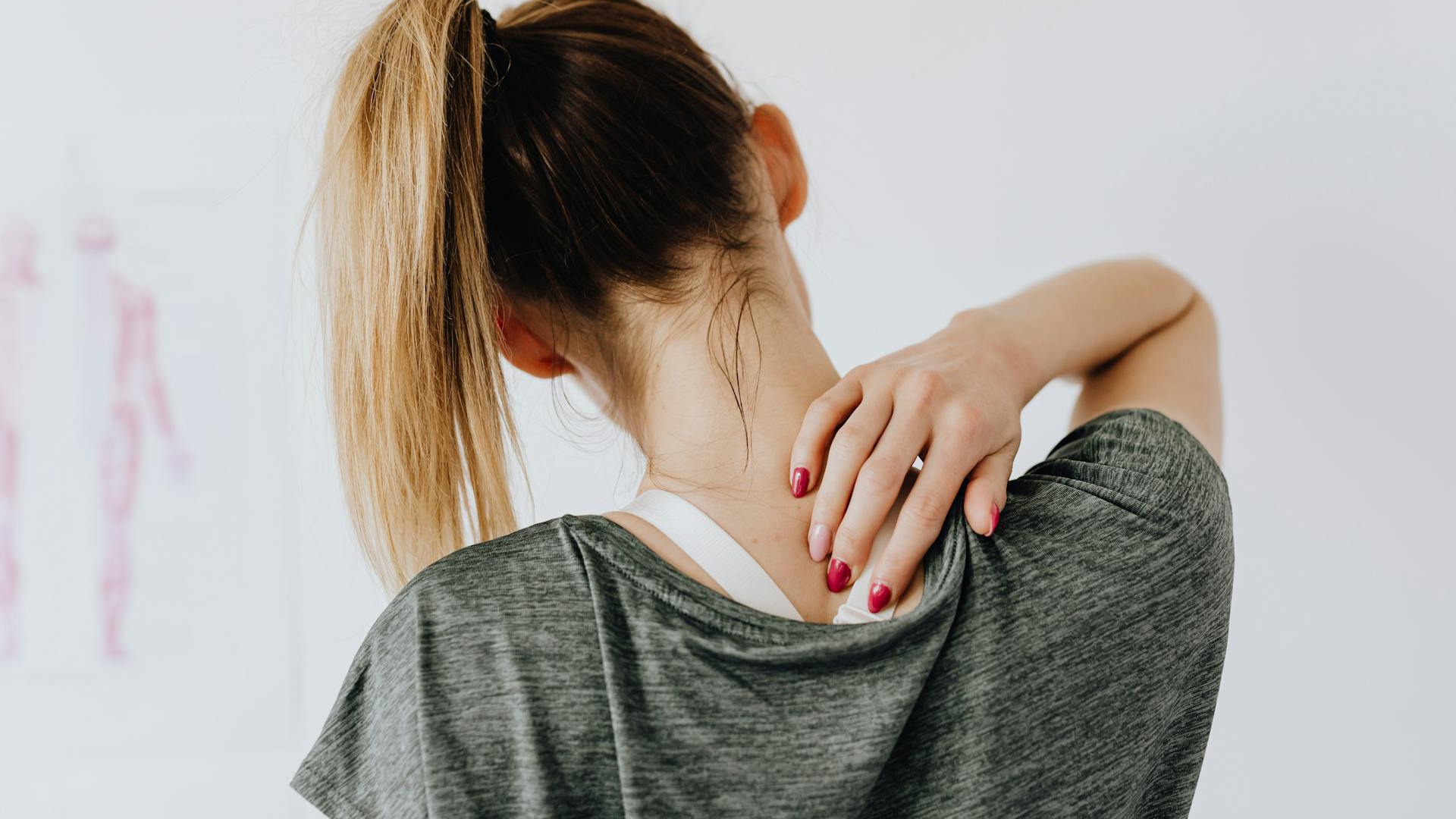While sitting at a computer or reading our digital devices, many of us unwittingly jut the chin forward. This forward head posture may also appear when driving. In this position, the upper back will tend to hunch, as the abdominals grow soft. Upper back and neck tension are common results, as these muscles must support the head when it’s pushed forward in this way. (With proper posture, the skeleton would support the weight of the head instead.) This shape also causes the scalene muscles on the neck to tighten, which in turn can cause pain and even numbness down the arms. In this post, we examine how this head position can cause pain, and how massage can help.
The scalenes are located on the front and sides of the neck. They assist with inhalation, by elevating the first and second ribs. They also allow you to rotate your head side to side. Dropping one ear toward one shoulder is also accomplished with the scalenes. Finally, the scalenes allow us to flex our heads forward. When we sit at a computer for hours on end, with the head reaching forward, the scalenes become tightened from overuse. In severe cases, this position can cause compression of the brachial plexus, the nerve network that begins in the neck and extends to the armpit and down the arms. In cases of extremely tight scalenes, the brachial plexus can be compressed, causing nervous numbness or tingling down the arms.
Oregon massage schools including East West College teach students how to treat the so-called “anatomical Bermuda Triangle” of muscles in the neck, including the scalenes. Scalenes may be softened through compression, muscle stripping, and other massage techniques. In earning their massage certification, our students have plenty of opportunities to work with the scalenes in our massage clinic, as tightness here is a common modern ailment. Desk jockeys, soccer moms, and smartphone addicts are all likely to suffer tight scalenes.
The massage school clinic on our campus at 525 NE Oregon Street in Portland can help loosen up your scalenes, with a $25 student massage. For long-term relief, it’s best to schedule consistent massages, and to also work on proper breathing and posture.



